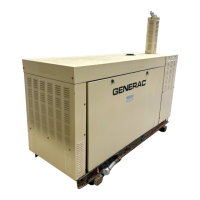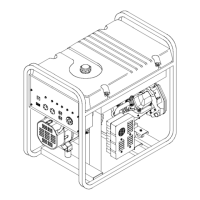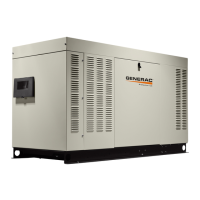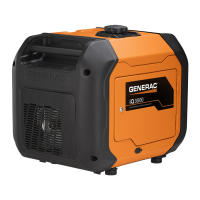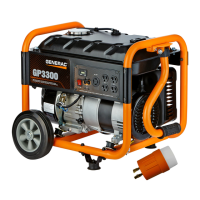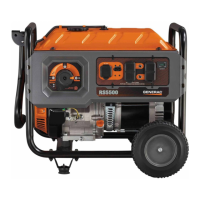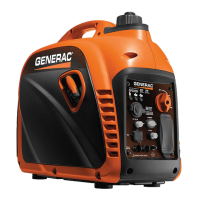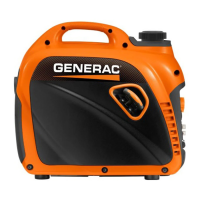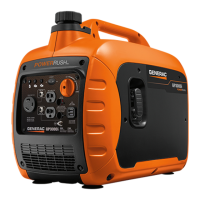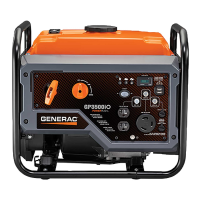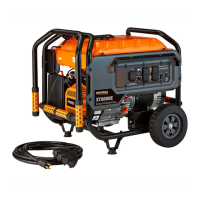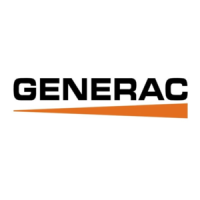
Do you have a question about the Generac Power Systems QS-4.0G and is the answer not in the manual?
| Brand | Generac Power Systems |
|---|---|
| Model | QS-4.0G |
| Category | Portable Generator |
| Language | English |
Explains how magnetism creates electric current flow in wires and coils.
Details how magnetism and current flow principles apply to AC generator operation.
Describes how direct current flow to rotor windings regulates generator output.
Outlines the step-by-step operational process of the generator.
Lists essential tools and test equipment for diagnosing generator problems.
Explains the relationship between rotor speed, poles, and output frequency.
Details the fixed ratio between generator output voltage and frequency.
Describes how dual stator windings are connected for different voltage outputs.
Explains the role and operation of the thermal protector in the stator.
Discusses how engine power capacity affects generator output and performance.
Details the detrimental effects of dirt, moisture, and salt on generator windings.
Provides a structured guide for diagnosing generator problems sequentially.
Introduces the Hi-Pot tester and its function for insulation testing.
Procedure for testing the insulation integrity of stator windings.
Procedure for testing the insulation integrity of rotor windings.
Steps for drying generator windings to restore insulation resistance.
Methods for cleaning generator components to prevent damage.
Procedure to check generator output voltage and frequency without load.
Procedure to check generator output voltage and frequency under electrical load.
Steps to check and adjust the engine governor for correct frequency.
Procedure to test the integrity of the field boost circuit for starting.
Tests the resistance of the stator excitation windings.
Tests the resistance of the stator power windings.
Tests the resistance of the rotor circuit, including brushes and slip rings.
Procedure to test and adjust the voltage regulator's performance.
Tests the voltage regulator's sensing leads for proper connection and function.
Procedure for adjusting engine speed to achieve correct no-load frequency.
Procedure for adjusting voltage regulator for optimal output voltage.
Procedure for adjusting the fuel-air mixture for maximum frequency.
Steps to remove the generator's connection panel cover and housing.
Steps to disconnect and remove the generator's control panel assembly.
Instructions for removing the rear bearing carrier plate and gasket.
Steps to remove the brush holders and associated brushes.
Procedure for removing the rear bearing carrier from the rotor bearing.
Instructions for carefully removing the stator assembly from the housing.
Steps to remove the blower housing from the engine plate.
Procedure for removing the rotor, fan, and ring gear assembly.
Steps to remove the starter and engine plate from the engine.
Cleaning and inspection of the rear bearing carrier plate for damage.
Cleaning and inspection of the rear bearing carrier casting for cracks or damage.
Cleaning and testing of stator assembly, including windings and insulation.
Cleaning and inspection of the blower housing for damage or defects.
Cleaning and testing of rotor assembly, including bearings and windings.
Inspection of fan and ring gear assembly for damage or wear.
Inspection of coupling plate for cracks, damage, or defects.
Inspection of brush holders and brushes for wear, damage, or defects.
Instructions for installing engine plate, fan, ring gear, and coupling plate.
Procedure for installing the blower housing onto the engine plate.
Instructions for aligning and installing the stator assembly.
Procedure for installing the rear bearing carrier and seating it on the rotor bearing.
Steps to install brushes and brush holders onto the rear bearing carrier.
Instructions for installing the rear bearing carrier plate with gasket.
Pre-operation checks including safety, oil, coolant, and fuel supply.
Procedure for cranking and starting the generator engine.
Steps for checking gauge readings, no-load output, and engine operation.
